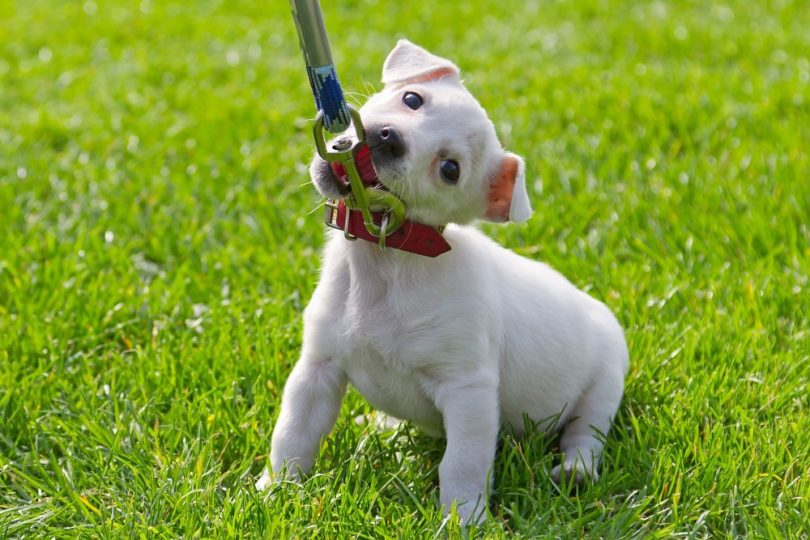Among the first steps you have to take as a trainer is to make sure you have control of your pet and this is done with the help of a leash. Depending on the dog, this might be a difficult or an easy task, but here are the basics on how to train a puppy to walk on a leash.
The city is a dangerous and noisy place so there are many threats for a dog and you don’t want him or her to jump in front of a car or bite the first unknown person you encounter. Before you take your pet out for a walk you need to make sure he is accustomed to a leash.
Introducing the Leash
There are many collars and leashes to choose from and you need to make sure you find one that is appropriate because otherwise you are only making things more complicated for yourself. The introduction of the leash should be done while the dog is doing something he likes such as playing or eating.
You need to get him used to wearing the collar and associate it with a pleasant experience. Some practice indoors is really useful so see how your dog reacts to the first trials. You must help your pet learn how to follow and this is why it is recommended that you start when the dog is young.
The Outdoors
The outside is the next step and now the pet will have many new sensations to encounter such as smells and noises, so give him time to adapt. Practicing with some cue sounds indoors will make it easier to get his attention back and during the first walks make sure you bring plenty of treats!
Common Problems with Leash Training
If the dog constantly pulls in another direction then the idea is to just stay still and refuse to move until the pet comes back to you. Yanking the leash or dragging the dog can lead to harm and that is quite the opposite of positive reinforcement, so don’t try it.
If he lunges for another dog, or something that catches his attention try to refocus him through treats and move away from the thing that he wants to go toward. Another problem is barking and this habit is usually caused by a lack of mental and physical stimulation, so make sure you work him out and this should stop. If it doesn’t, then use the same method as with the lunging toward cars.








Leave a Comment